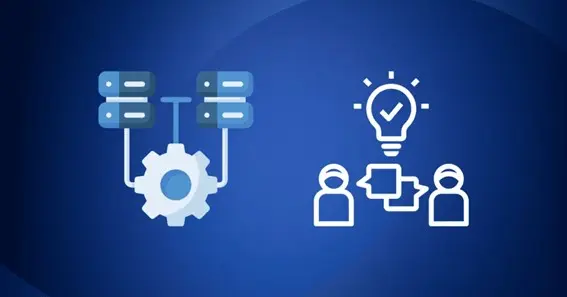In the evolving business landscape, thriving in the competitive market and staying ahead can be challenging. Especially, when the organization grows and expands, managing team members becomes a tough task for project managers. Are you struggling to manage your workforce manually? Do you spend most of your time reviewing employee data, assigning tasks, preparing schedules, and compiling reports? Say goodbye to the unnecessary burdens and embrace workforce management software.
In this post, you will explore the benefits and challenges of workforce management software in modern businesses. Let’s dive in!
What is Workforce Management Software?
Workforce management software is a powerful tool that automates tasks like scheduling, workload distribution, time tracking, and more. The core aim is to streamline operations, simplify workforce management, and boost overall productivity. These tools lower the burden of project managers and enable them to handle employee tasks efficiently.
Also Read N: When Choosing Your New Office Furniture In Sydney – You Need To Know The Following.
Benefits of Workforce Management Software
Are you planning to invest in employee management software? Delve into the top benefits you can expect.
- Better Attendance Tracking
When you record the attendance of your team members manually using spreadsheets, it can be tiring and time-consuming. Moreover, there are chances that you might end up making errors. As a result, it can lead to disappointment among employees and affect their trust. If you want to avoid such situations and ensure accuracy, leveraging the workforce management software can help. Besides tracking attendance, these tools can also make it easier for managers to approve time-offs in a hassle-free manner.
- Improved Resource Allocation
Assigning the right tasks to the right person at the right time is the key to a project’s success. However, it is easier said than done. When you lack clarity about the skills and expertise of your team members, allocation can be challenging. In such a situation, implementing employee management software is a smart move.
The dashboard of the tools can provide you with valuable information like skills, experience, availability, and qualifications of employees in one place. As a result, allocating resources to diverse projects becomes easy. Moreover, you can have a clear idea of the different tasks assigned to your team members. It can significantly lower the chances of overburdening your resources, thereby preventing burnout.
- Efficient Time-Tracking and Payroll Management
Calculating the actual hours of work of different employees is another challenging task. However, leveraging the workforce management tool can enable you to conveniently track the work hours and break durations of your team members. The software makes capturing the clock-in and clock-out times easier. It helps project managers save time and ensure effortless payroll processing.
- Greater Efficiency and Productivity
Every business aspires to have a productive workforce and drive exceptional outcomes. However, when you assign a task to a team member who doesn’t possess the necessary skills and experience, it can have a direct impact on their productivity. Wondering why? It’s because the employees may find the tasks to be difficult and boring. Also, overloading your resources can prevent them from performing at their full capacity.
Employee management software can help you get rid of all such hassles. These tools ensure assigning the right tasks to the right employees. Moreover, the overload indicator can offer real-time visibility of the resource capacity and avoid overburdening. All these can boost the productivity of your team members and automatically the organization as a whole.
- Reduced Costs
Lowering costs and improving profits is the core goal of every business. The employee management software can automate tasks like scheduling, payroll processing, tracking, and more. By streamlining business operations, it helps save a great deal of time and money. As a result, you can expect higher profits.
Also Read P: Why You Should Choose Our Airbnb Cleaning Service
Challenges of Workforce Management Software Implementation
No doubt, implementing the software offers several benefits. However, you may come across some challenges too. Read on to discover the prominent challenges.
- Finding the Right Tool
With so many tools available, selecting the perfect software for your organization can be tricky. To simplify your task, understanding your exact needs, setting a budget, and comparing the options can help. Be sure to evaluate the features of the employee management software and pick the one that suits your requirements the best.
- Data Integration
Integrating your existing data with the new software can be complex. If it is not done properly, it can result in potential errors and lead to data loss. That is why coming up with appropriate strategies to ensure smooth integration is the need of the hour.
- Technical Challenges
Not everyone in your team has expertise in handling the software. So, you are likely to witness resistance to the adoption and implementation of the tool. However, educating your team members about the significance of the software and providing them with proper training can help overcome such challenges effectively.
Conclusion
To succeed in this cut-throat competitive era, leveraging workforce management software has become essential. Are you looking for the best software at an affordable cost? eResource Scheduler is the perfect choice.






